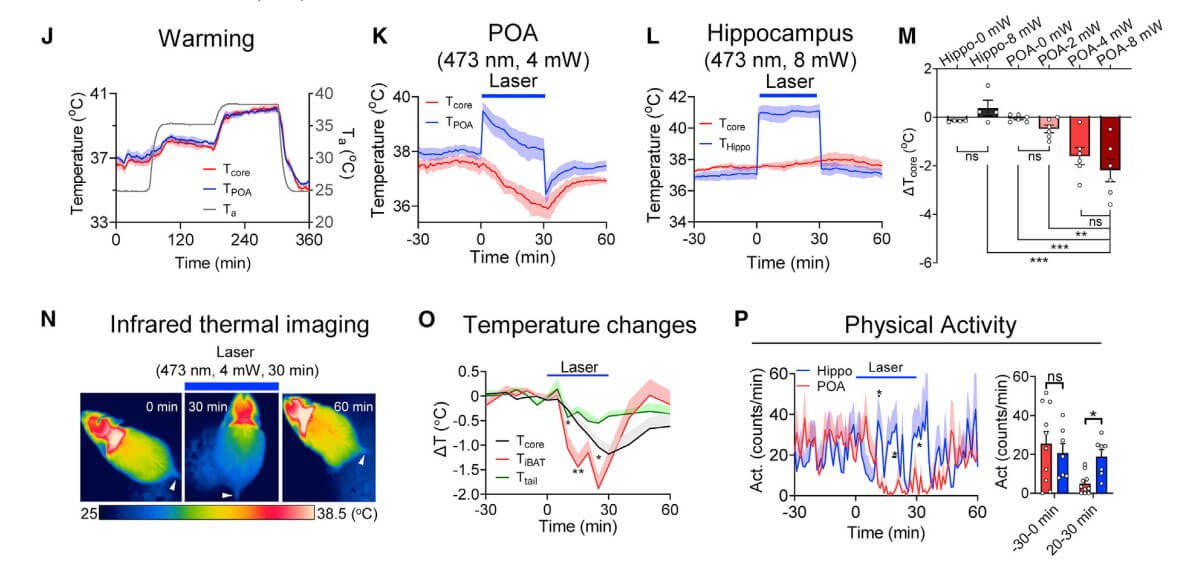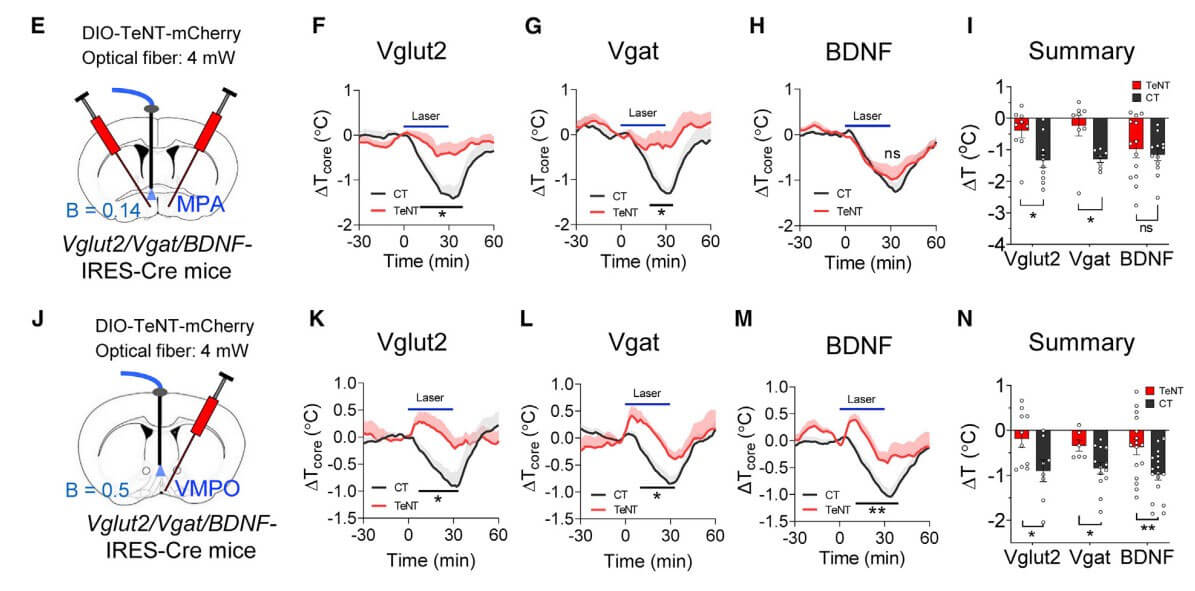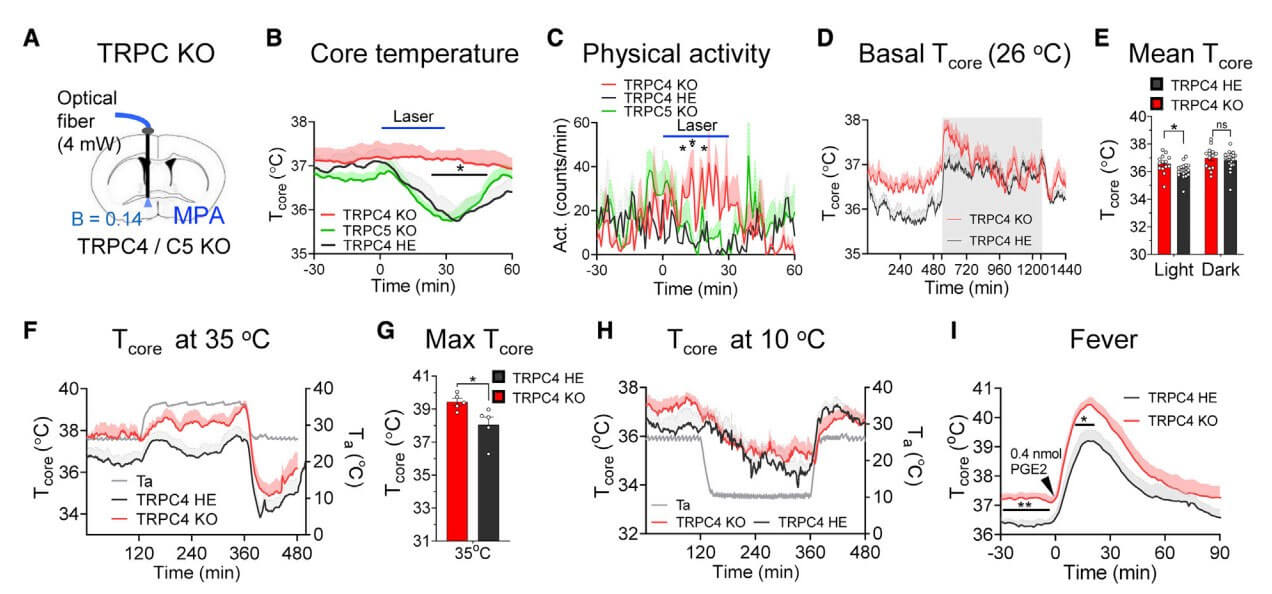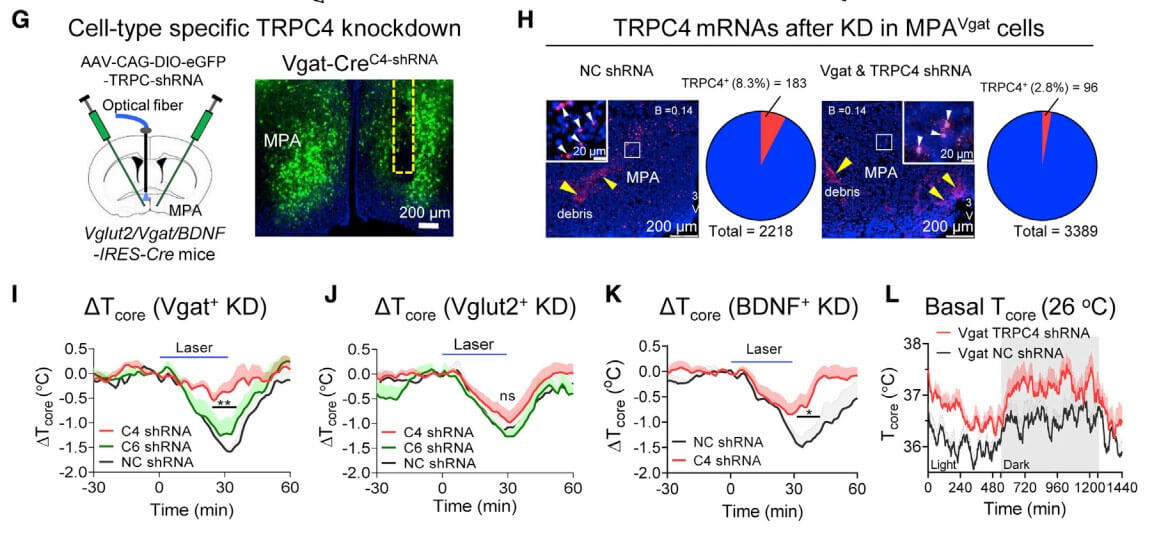- E-mail:BD@ebraincase.com
- Tel:+8618971215294
The stability of body temperature is a necessary condition for mammals to maintain life activities. Abnormal body temperature often indicates obvious disease changes in living organisms. The preoptic area (POA) of the hypothalamus is the body's temperature regulation center. Neurons in the POA brain area can make corresponding adjustments to maintain the body's temperature homeostasis by sensing changes in external temperature. Recent studies have found that there are about 10%-30% of heat-sensitive neurons in the preoptic area (POA) of the hypothalamus that sense brain temperature. When the brain temperature rises, heat-sensitive neurons can limit the body temperature from being too high.
Previous studies have believed that temperature-sensitive transient receptor channels (TRPM2) are the receptors used by heat-sensitive neurons to sense changes in external temperature. However, recent studies have found that knocking out TRPM2 has no effect on body temperature regulation. Therefore, it is currently unclear how heat-sensitive neurons sense central temperature changes.
On December 8, 2022, Shen Wei's team from the School of Life Sciences and Technology of Shanghai University of Science and Technology published a research paper titled "Hypothalamic warm-sensitive neurons require TRPC4 channel for detecting internal warmth and regulating body temperature in mice" on Neuron and found that The transient receptor potential cation channel (TRPC4) in the POA brain area is a key molecule for the brain to sense internal temperature and maintain body temperature. Targeting TRPC4 can regulate changes in body temperature.

The researchers used the photothermal effect to design a device that can locally regulate the temperature of the brain area of mice. They used the device in freely moving mice to cause an increase in the temperature of the brain area through light stimulation of a specific power. When light stimulation locally increases the temperature of the POA, it is found that when the temperature of the POA brain region rises to 39.5 degrees, the body's temperature will gradually decrease. Further research found that the decrease in body temperature caused by the increase in POA temperature was related to the decrease in brown fat heat production.

Figure 1. The decrease in body temperature caused by the increase in POA temperature.
The POA is a complex subregion composed of multiple small nuclei. In order to study which nuclei mediate the cooling effect after the temperature of the brain area increases, the researchers observed the specific nuclei of the POA and found that the medial preoptic nucleus ( When the temperature of MPA) and median preoptic nucleus (MPO) increases, it can cause the body's temperature to decrease. Diphtheria toxin was further used to induce the apoptosis of excitatory neurons or inhibitory neurons in the MPA brain area and VMPO brain area, and it was found that increasing the POA temperature could not cause the body temperature to decrease.

Figure 2. Excitatory neurons and inhibitory neurons in the POA brain area
mediate the decrease in body temperature caused by increased temperature.
In order to find key molecules that sense temperature changes in the POA brain area, the researchers analyzed single-cell sequencing data from the MPA brain area. Through analysis, they found that heat-sensitive neurons in the MPA brain area highly expressed transient receptor voltage ion channels, including TRPM6, TRPA1, TRPC4, TRPC6, etc., used lentivirus to silence each TRP molecule, and found that only silencing TRPC4 can block the decrease in body temperature caused by the increase in MPA temperature.

Figure 3. TRPC4 in the MPA brain region regulates body temperature.
In order to study the characteristics of TRPC4-positive neurons, the researchers used mRNA fluorescence in situ hybridization experiments and found that TRPC4 was highly co-expressed with the GABAergic neuron markers Slc32a1 and Gad2, and was co-expressed with the glutamatergic neuron marker Slc16a6 at a low level. , indicating that the TRPC4-positive neurons in the MPA brain area are mainly GABAergic inhibitory neurons, and knocking out TRPC4 in inhibitory neurons can block the decrease in body temperature caused by the increase in temperature in the MPA brain area. Finally, in order to confirm that TRPC4 in the MPA brain area is regulated by external temperature, the researchers used pharmacological means to intervene in the activity of TRPC4. Injection of the TRPC4 blocker ML204 into the MPA area can significantly attenuate the decrease in body temperature caused by the increase in temperature in the MPA brain area, while injection of the TRPC4 agonist EA can cause a dose-dependent decrease in body temperature.

Figure 4. TRPC4 senses temperature changes in GABAergic neurons in MPA brain area
In summary, through self-developed photothermal effect equipment, this article found that an increase in temperature in the POA brain area can cause a decrease in body temperature. Further analysis found that TRPC4 on GABAergic inhibitory neurons in the MPA brain area is the key to sensing central temperature changes. Molecule, knocking down TRPC4 in inhibitory neurons can block the decrease in body temperature caused by the increase in MPA temperature. This suggests that TRPC4 in the MPA brain region is an important target for regulating body temperature.
The following interpretation only represents Xiaobu's personal understanding and opinion of the article. All the pictures used in this interpretation are from the original text. If you need more information, please refer to the original literature